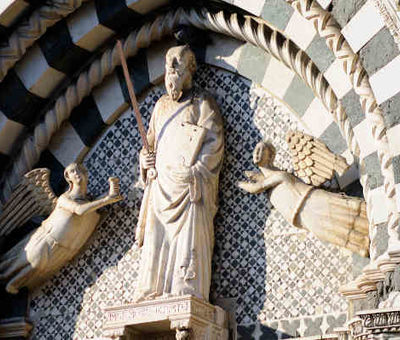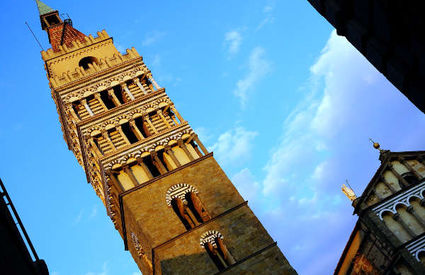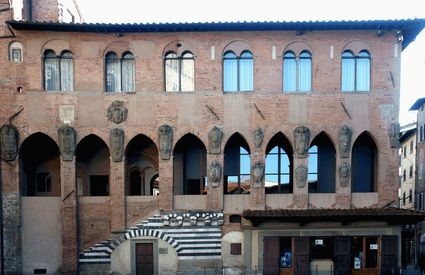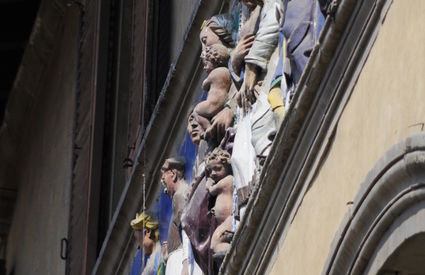Art and nature balance and reflect each other
When you are driving along the motorway towards the sea, leaving Florence behind you, after you pass the last road off to Prato, you immediately realise that the province of Pistoia is special. In the sense that it has landscape features that are unusual in Italy and even in the Tuscany of today. Pistoia is to your right, among green surroundings: the dome of the Basilica of Our Lady of Humility, the bell tower of San Zeno, the tower known as Catiline's Tower, the old colours of the walled town and, in the background, the grand mountains of the Apennines. Up till now we have driven through a vague countryside, urbanised, dotted with houses and commercial and industrial structures. When we get to Pistoia we notice that the panorama is changing. The town appears to us like those little models that patron saints hold in their hand in medieval polyptychs, closed in its recognisable urban identity, surrounded by greenery.
Before leaving the motorway and entering Pistoia, the attentive traveller will have understood the essential truth. He will have understood that this is a part of Italy where art and nature balance and reflect each other. The buildings that he already glimpsed from a distance enjoy a harmonious relationship with the green belt that surrounds the town, with the hills and the mountains that mark the horizon.






